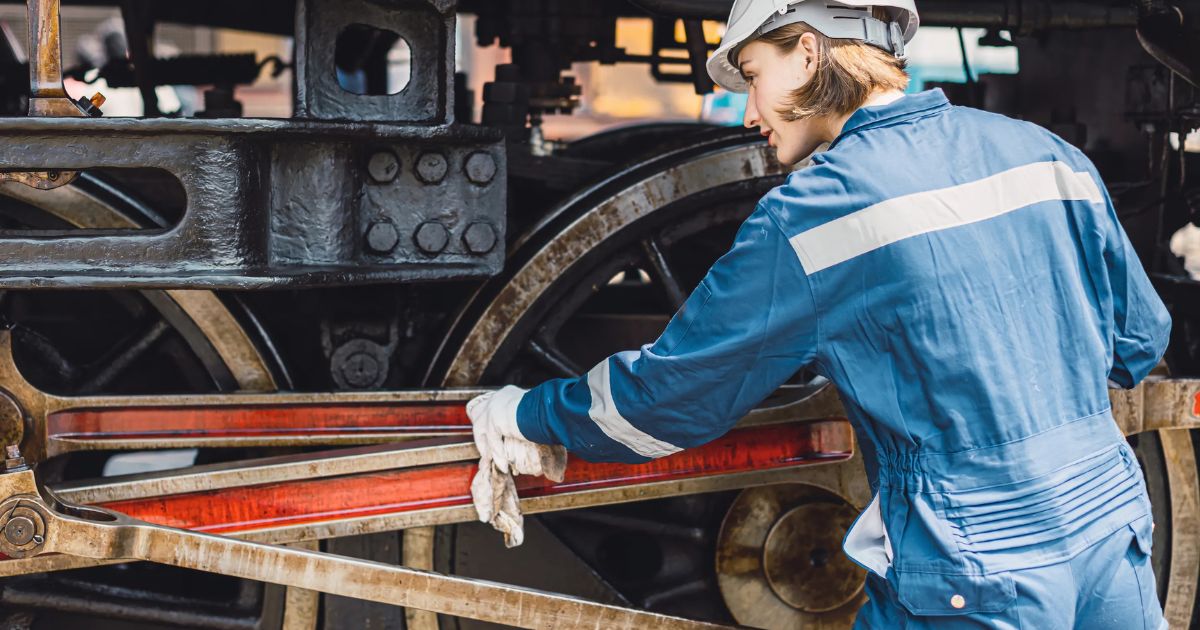
Technology and maintenance as engines of the railway future
January 29, 2025

January 29, 2025
Since its invention, the railway has been a symbol of progress and modernity. Its ability to connect cities, move people and transport goods efficiently makes it a fundamental pillar of the global economy. However, railway systems face a critical challenge: modernizing their processes and adopting technologies that ensure a more efficient, safe and sustainable service.
In this context, the maintenance of railway infrastructure plays a strategic role. Every locomotive, wagon, kilometer of track and signalling system is an essential part of a gear that must operate with absolute precision. Failures, delays and interruptions aren't just operational setbacks; they have a direct impact on user experience, service reputation and associated costs. In fact, it is estimated that maintaining the European railway system, including trains and tracks, has a annual cost of more than 10 billion euros, according to Mafex Magazine (October 2020). This is where technology becomes the great ally of the railway of the future.
Digitalization: a connected and efficient railway system
A crucial step forward is the digitalization of maintenance management. Many railway systems still rely on manual processes or data scattered across different platforms. This slows decision-making and increases the risk of errors. With digital tools, it is possible to centralize all information on a single platform, from maintenance history to task planning.
Let's imagine a system where each asset has a “digital passport” that details all the interventions performed, the spare parts used and the next scheduled tasks. This level of visibility improves efficiency, facilitates collaboration between teams, and ensures that every decision is backed by reliable data.
IoT and Artificial Intelligence: Predicting the Unpredictable
For decades, maintenance was predominantly reactive: waiting for something to fail to intervene or performing preventive maintenance based on a “prescription”, that is, the manufacturer's generic recommendations, occasionally complemented by expert judgment. However, with the advent of the Internet of Things (IoT), this dynamic has changed dramatically. Nowadays, sensors installed on trains, tracks and stations collect real-time data on the state of assets. These data, processed using artificial intelligence, allow identify patterns, anticipate failures and plan interventions before problems worsen. This technology makes it possible to carry out just-in-time interventions, optimizing resources and minimizing interruptions in operations.
A clear example is the use of temperature and vibration sensors in critical components, such as locomotive axles or motors. These technologies They detect anomalies That, although invisible to the human eye, are early signs of a possible failure. Timely intervention not only avoids costly repairs, but also ensures service continuity.
Sustainability: the impact of technology on the environmental footprint
Efficient maintenance is also a matter of sustainability. Each unexpected breakdown involves additional consumption of resources: materials, energy and hours of work. By anticipating and optimizing interventions, technologies such as IoT and AI directly contribute to reduce waste and emissions. A well-maintained railway system is always more reliable and environmentally friendly.
A cultural change to lead the future
Adopting these technologies requires more than investment: it requires a Change culturel. Maintenance must stop being seen as an operating expense and become a strategic priority. Technical and management teams must align around a common goal: operational excellence. Only then can we unlock the full potential of these innovations.
The railway is at a decisive moment. Technology offers tools to transform maintenance into a proactive, efficient and sustainable activity. While the challenges are great, the opportunities are even greater.
The question is not if we should adopt these solutions, but when and how we will do so. In a world that is moving at great speed, keeping still is not an option. The future is underway. Do we get on the train?